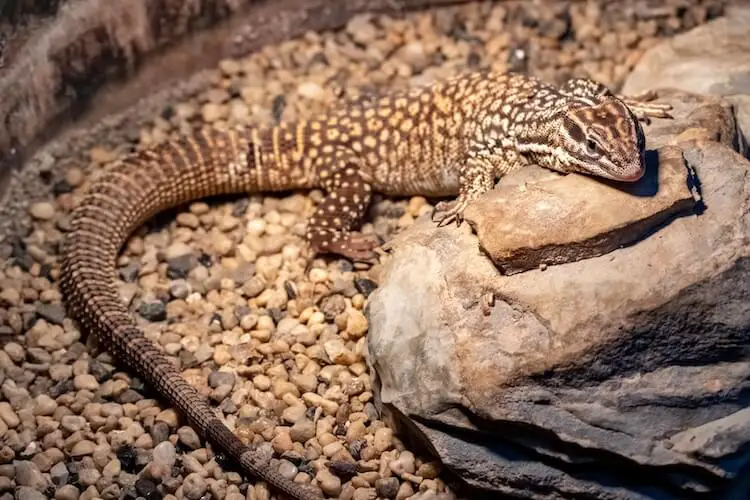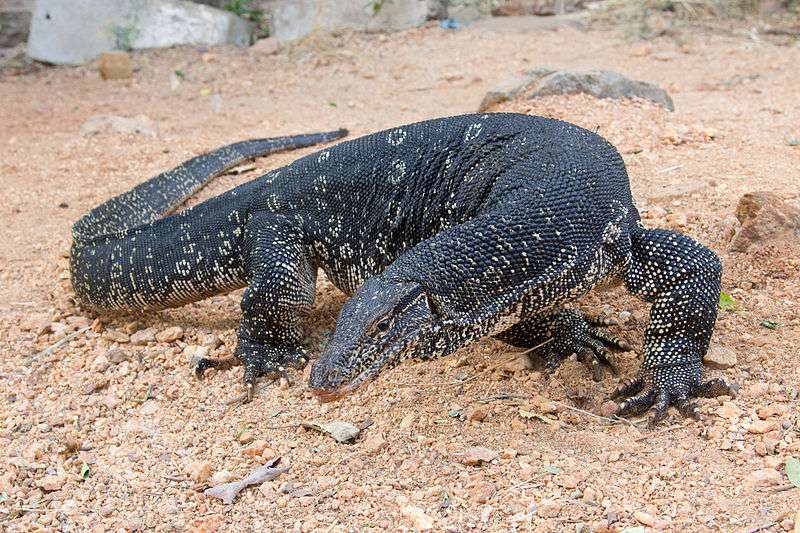
Description
Scientific name: Varanus panoptes
Life span: 15 to 20 years
Argus monitors, sometimes known as yellow-spotted monitors, are beautiful lizards to see. Its back has rows of large, black markings that are intermingled with smaller, whiter patches. These large, dark spots are most noticeable in the center of the back. Towards the end of the tail, there are colored bands. The overall appearance is brownish.
Native Region/Habitat
Argus monitors are endemic to New Guinea Island and Australia. These lizards have developed a very adaptive lifestyle as the environment is so diverse. They reside close to rivers, savannah grasslands, and floodplains.

Behavior
They spend a substantial amount of time on the land because they are predominantly terrestrial in nature. This species spends a significant amount of its time in burrows, which they will dig themselves or take over if one already exists. Nevertheless, they will avidly graze in water and trees. When pursued, these big lizards will sprint 100 meters quickly to the next tree or hole.
Argus monitors are often laid back. They can bite, however, this seldom happens when they are scared. Usually, accidental bites result from overly enthusiastic eating. In the wild, these lizards are rather active. Many of their quick movements are impossible in captivity. As a result, the majority of Argus monitors spend their days relaxing, discovering, and digging. In order to have a better view of their environment, they can climb trees and other objects if given the chance.
Care As a pet/In captivity
Argus monitors like to be observed rather than handled. They don’t like being held in your hands very much. Even animals who have a close relationship with their owners dislike being handled. It is suggested that you construct an enclosure at least 6 feet in length, 4 feet in width, and 4 feet deep. You’ll need a considerably larger enclosure if you want to keep a group of these lizards together. Temperatures might range from 75°F – 80°F on the colder end. A temperature of 95 -100°F should be on the warmer side. Additionally, it’s crucial to supply sufficient standing water.
Table





